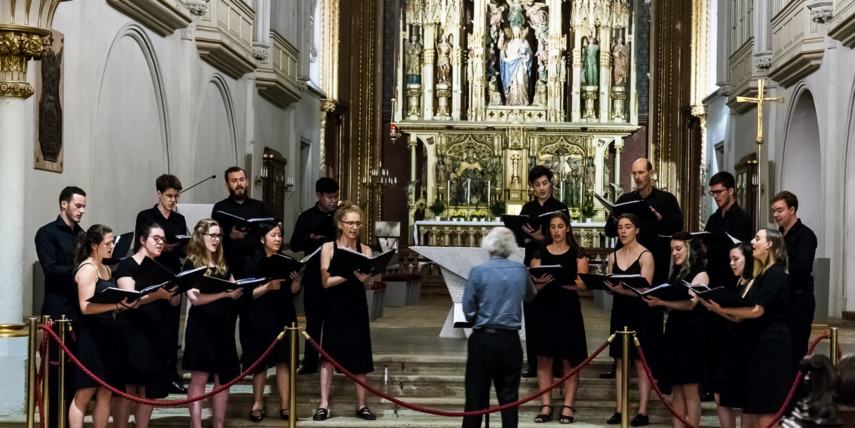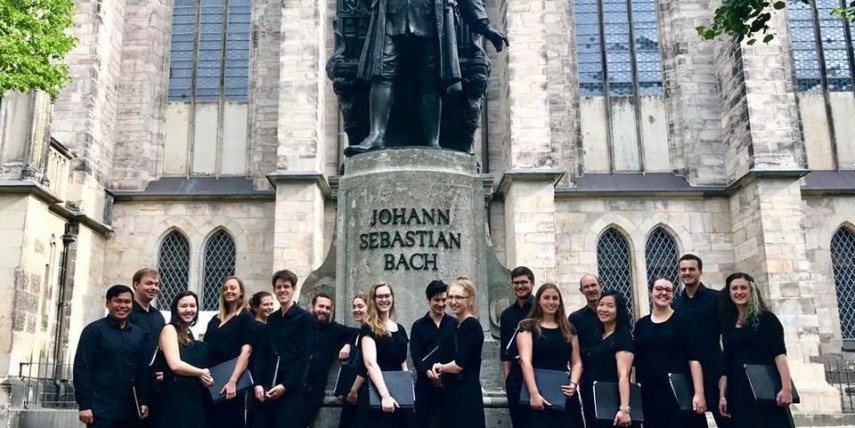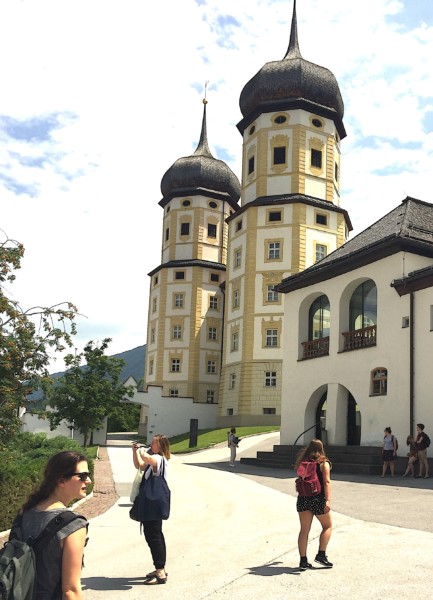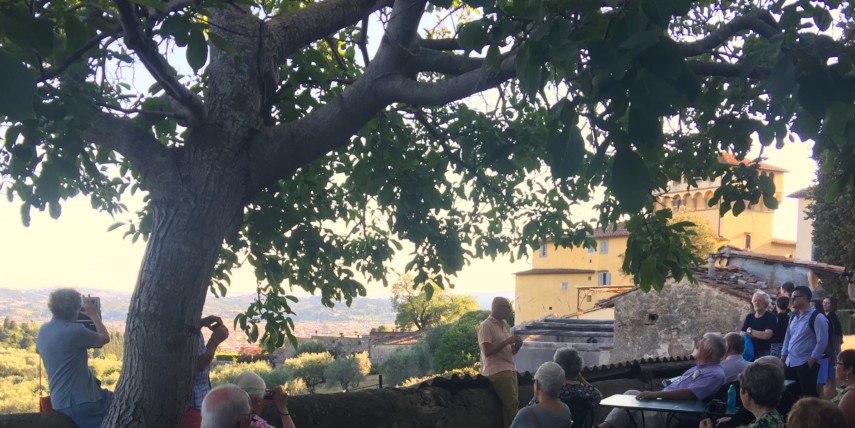“This choir plays in the super league,” … a director of Denmark’s oldest classical music festival summed up the Australian Chamber Choir’s performance in the twelfth century Abbey Church of Sorø, at the same time conferring on the Choir an honorary life membership of the Sorø International Music Festival. Accepting this honour, the ACC took its place among such luminaries as Wilhelm Kempff, Anton Heiller, Gaston Litaize and Julian Bream.Written by: Elizabeth Anderson
“This choir plays in the super league,” Kristine Christensen, a director of Denmark’s oldest classical music festival, summed up the Australian Chamber Choir’s performance in the twelfth century Abbey Church of Sorø, at the same time conferring on the Choir an honorary life membership of the Sorø International Music Festival. Accepting this honour, the ACC took its place among such luminaries as Wilhelm Kempff, Anton Heiller, Gaston Litaize and Julian Bream. The town of Sorø, established by Copenhagen’s founding father, Archbishop Absalon, attracts regular concert-goers from around Denmark and during Festival time a steady stream of international visitors can be found in the cobblestoned streets and the lush monastery gardens. Douglas Lawrence, founding director of the ACC, has performed at the Festival several times; four times with the ACC and, before that, with the Choir of Ormond College (University of Melbourne) or playing solos on the Abbey’s renowned Marcussen organ. Performing in festivals like this is by invitation. Why are Douglas and his singers routinely invited back, and why have people begun touring with them as Friends of the choir? I ask Douglas Lawrence this question.
ACC singers at Thomaskirche, Leipzig
“Europeans just love the way we sing the Motets of Bach,” he explains. Noeline Sandblom, who took the ACC Friends’ tour in 2017, agrees: “To hear the Choir singing JS Bach’s Ich lasse dich nicht in the austere St Thomas’ in Leipzig, the place in which the great man laboured for so long and composed so much of his music, was both a thrilling and a humbling experience.”
In Leipzig, the choir was accompanied by Thomaskirche organist Ullrich Böhme. A consummate musician, Böhme continues the German tradition of improvising complex fugues as introductions to congregational hymns. As a warning against showing off, Bach was cautioned by church authorities for making these introductions too long and complicated. I ask Ullrich why he invited the ACC back to Leipzig after our first concert there in 2011. His answer comes with a forthrightness he might share with JS himself: “In Leipzig we have several excellent choirs, not only the St Thomas’ Choir. Of the many visiting choirs we hear, not many come up to our standard. The Australian Chamber Choir did.”
The ACC performed from the organ gallery of the Thomaskirche with Ullrich Böhme at the organ
There’s another side to this success, according to Douglas: “European audiences are fascinated by the Australian works on our programs. Since 2011, we have included newly-commissioned works in our European tour programs from Christine McCombe, Luke Hutton and Tom Henry, alongside works by Michael Easton, Nigel Butterley, Brenton Broadstock, Ann Boyd, Loclan McKenzie-Spencer, Philip Nunn and Hildy Essex.”
For those who travelled with the Choir in 2015 on the first of its Friends’ tours, it was the responses of European audiences to music on Indigenous themes that was most remarkable. Tom Henry’s Kakadu Man tenderly memorialises the late Aboriginal elder Bill Neidjie (1920?–2002), leader of the Bunitj clan of the Gagudju people, and Bill’s generosity in sharing the sacred story before his death in the country that is now the Northern Territory’s Kakadu National Park. Henry describes a long and careful journey of discovery in seeking to learn more of the bond between Aboriginal people and their land, proceeding only with their permission to extend the reach of that wisdom to a wider public. ACC Friend, Alma Ryrie-Jones explains “Audiences in Germany and Denmark were spellbound by the work and what it has to say, not just about the land that is now Australia but about all of us in our relation to the world”:
I never damage
I look after
This ground and this earth
like brother and mother…
Our story is in the land.
It is written in those sacred places…
Dreaming place
We can’t break law…
We walk on earth, we look after,
like rainbow sitting on top…
When I die…
I’ll be with my brother, my mother.
My spirit has gone back to my country,
my mother.
Henry’s evocative and reverent treatment of this material and the choir’s clear and subtle performance moved audiences, who plainly had a sense that they were encountering something unexpected and new and contemporary. Yet it was coming to them from a very ancient place and a very ancient people – it is sometimes difficult to appreciate just how long the Aboriginal nations have been mapping and caring for country and keeping its secrets in song. Many Europeans might view Australia as young and raw and untried, but this work gave voice to a very different perspective.


ACC performing at the Augustinerkirche in Vienna in July 2017. Photo by Ian Phillips
In six European tours, the ACC has sung in many cultural capitals: Copenhagen, Berlin, Bonn, Cologne, Hamburg, Paris, Lausanne, Geneva, Gdansk, Vienna. Darmstadt, since the establishment of the Darmstadt school of composers in the early 1950s, has been regarded as an important capital of the new music movement, with the International Summer Course for New Music, where those composers met, still an important annual event on the new music map. In 2015, when the ACC was invited back to Darmstadt to open the International Organ Summer series, local music journalist, Albrecht Schmidt wrote in the Darmstadt Echo: “Exotic sounds filled the Pauluskirche … with rarely heard contemporary works juxtaposing evocative sounds of the Australian bush with early music. … They captivated the audience with their amazing expression … Texts dealing with the ancient wisdom of man’s dependence upon nature and his connection to the earth provide the emotional basis of the fascinating Kakadu Man, a music that seems to penetrate into visionary dreamscapes, and after stringent dissonance, surprises with a resolution into blissful thirds. Spectacular also was “Kondalilla”, from Great Southern Spirits by Stephen Leek: singers dispersed around the spacious building made didgeridoo-like sounds and the chortling, cheeping, tweeting and buzzing sounds of nature.
“The choristers consistently impressed with their exploration of sonority and atmospheric depth.” Again, this is enjoyment of contemporary, fresh Australian work, yet it asserts an ancient consciousness of the land that sets aside any colonial notions of what it means to be Australian.
Singers arrive in the 13C Cistercian Abbey in the Austrian Tyrol.
For our singers and those travelling with us, this new theme of what it means to be Australian became an unexpected talking point. Stams, near Innsbruck is home to athletes training for Austria’s Olympic ski team. On a mountainside beneath a ski jump stands a thirteenth century Cistercian Abbey. “Despite torrential rain,” Noeline Sandblom recalls, “the church was filled to capacity and the friars obliged by providing dozens of extra chairs. The ACC’s program, with a new Australian work as its centrepiece, focused on themes of exile and immigration. The choir began from the organ loft, singing first the Bach Chorale By the Waters of Babylon I sat down and wept, and then, accompanied by organist and chorister Ria Polo, Howell’s mystical Nunc Dimittis. The singers then processed solemnly down the nave as Ria performed Bach’s Chorale Prelude An Wasserflüßen Babylon, with the rest of the program sung unaccompanied from the steps of the altar. Towards the end of the program, different singers gave a short explanation about the choir in various European languages, finishing with native speakers of Indonesian and Tagalog (language of the Philippines). This display of unselfconscious multiculturalism particularly fascinated the American couple sitting next to me, who were keen to know more about Australian culture.”
Stams Abbey: view from the organ loft
Bregenz on Lake Constance is famous for the floating stage of the Kunsthaus, where opera performances take place each summer. From Bregenz, one can drive for eight minutes alongside the lake to reach Germany, or for twenty minutes in the opposite direction to reach Switzerland. In 2017, we took the ferry from here to the German island of Lindau. These days a causeway links the former Roman island-state with a much larger modern suburban sprawl on the German mainland. The ACC has regularly performed in many of Southern Germany’s most picturesque towns – Lindau, Nördlingen, Wangen, Tübingen – where summer concerts in ancient buildings are well-attended by locals and tourists. Tour participant Alana Mitchell recalls that “The three-day sojourn in a harbourside hotel in Lindau deserves special mention. It was made truly amazing by our private tour of the Rieger organ factory at nearby Schwarzach. I’m sure I wasn’t alone in having no idea of the enormous number of critical, finely-honed steps that go into creating a pipe organ. The care taken by chief voicer, Stefan Niebler to demonstrate how an organ pipe is voiced was particularly enthralling”.
(Watch this at https://youtu.be/4UWw3OWgW2U )
 View from our breakfast room in Lindau
View from our breakfast room in Lindau
“There is something powerful in making friends with people when you’re in their country,” says Douglas. “Over the years, I’ve really enjoyed taking young singers to Europe, many of them on their first overseas trip. Big cities are always exciting, but often it’s the small places and the people you meet that leave a lasting impression.”
 Hannah Spracklan-Holl at Sorø Abbey in 2013, pictured with Artistic Director of the Sorø International Music Festival, Merethe Lammert-Køhl Hansen and Douglas Lawrence.
Hannah Spracklan-Holl at Sorø Abbey in 2013, pictured with Artistic Director of the Sorø International Music Festival, Merethe Lammert-Køhl Hansen and Douglas Lawrence.Hannah Spracklan-Holl joined the choir in her first year at the Conservatorium of Music. Says Hannah: “On my first tour in 2013 I stayed with a few families in Germany who didn’t speak much English and I spoke no German. After that I set my mind on being able to communicate with them if I ever went back. I have since been on two more ACC tours and have been lucky enough to stay with many of the same families, with whom I can now communicate! Now I am studying for my PhD and I am working with a lot of German-language sources. I don’t think I would ever have learned German without the impetus I got from touring with the choir. Not to mention the amazing places I’ve had the privilege to sing in and the connections I’ve made with people both in Australia and in Europe.”
“There’s something that comes across in their singing,” says Douglas. “Maybe it’s the joy of being on a journey with like-minded people. Audiences everywhere can hear joy.”
Tenth birthday lunch in a restaurant adjoining olive groves and overlooking Florence
On 4 July 2017, following the first two concerts of the 2017 tour in Rome and Florence, Douglas and I celebrated the tenth birthday of the ACC together with our singers and our Friends group in a restaurant surrounded by olive groves at Maiano. Joy Carver recalls how “we relaxed in the beautiful grounds and enjoyed fabulous views over Florence as a balmy evening set in – perfect for dining on the terrace, and for celebrating with these beautiful young people the stunning success of the Australian Chamber Choir.”

Elizabeth Anderson is a harpsichordist and singer who has managed the Australian Chamber Choir since it began in 2007. As a harpsichordist, she has released a number of CDs with Move and Naxos, performed with the ACO, Melbourne, Adelaide and Tasmanian Symphony Orchestras and appeared in the City of London, Leeds International, Dublin Early Music and Vendsyssel Festivals. She is married to organist and ACC Artistic Director, Douglas Lawrence.





